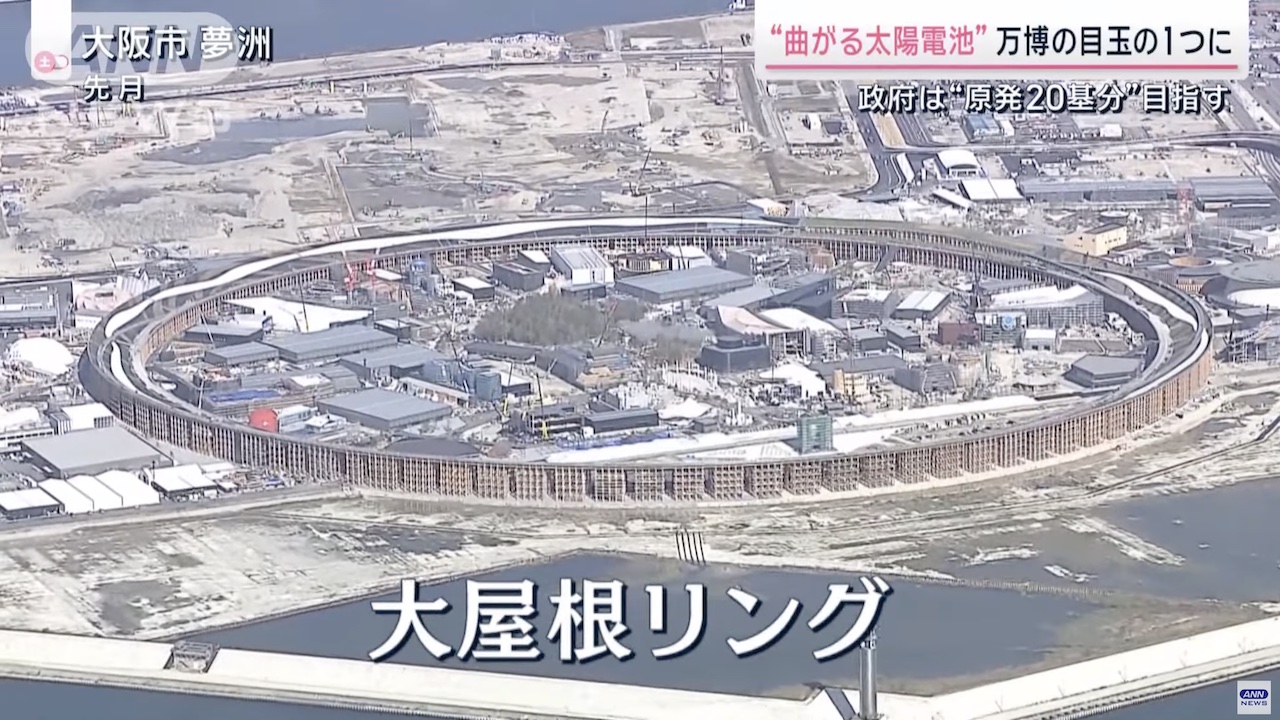OSAKA, Dec 22 (News On Japan) - The next generation of solar cells, known as perovskite solar panels, are ultra-thin, lightweight, and bendable. The Japanese government has set a goal of achieving the equivalent of the energy output from 20 nuclear reactors with perovskite solar cells by 2040. With their use set to expand in various locations next year, 2024 is being called "the dawn of domestic perovskite."
During the Osaka-Kansai Expo opening in April 2025, a two-kilometer-long wooden ring roof featuring cutting-edge perovskite solar panels will be one of the highlights. The ring, which connects various international pavilions, represents innovation in sustainable architecture.
Perovskite solar panels will also be prominently displayed at the bus stop near the expo grounds. At 250 meters in length, this installation is one of the largest of its kind. These solar panels will power LED lights and generate sufficient electricity for the entire one-kilometer bus stop structure.
Kenharu Morita, head of Sekisui Chemical's PV project, explained, "These solar panels are a tenth of the weight of conventional ones and can be installed on curved surfaces, making them highly versatile."
The introduction of perovskite solar panels may change the traditional model of generating electricity at large-scale solar farms in rural areas and transmitting it to urban centers. In Osaka’s city center, walls of Sekisui Chemical's building are equipped with perovskite panels that generate electricity used directly in offices.
According to Morita, "Perovskite panels allow electricity to be produced where it is consumed, eliminating transportation costs and promoting local energy production for local consumption."
Japan’s Ministry of Economy, Trade, and Industry announced a plan on December 17th to source 40–50% of the nation’s electricity from renewable energy by 2040, with perovskite solar cells expected to play a key role.
Perovskite technology is also making its way into residential use. In a model house, balcony glass embedded with perovskite solar cells was showcased. "This glass can generate electricity from sunlight in the morning and evening," said Yukihiro Kaneko, head of Panasonic HD's Perovskite PV development division.
Mass production of perovskite panels is anticipated to bring costs down by the early 2030s, potentially matching the lifecycle cost of current solar panels.
Iodine, an essential raw material for perovskite production, gives Japan a competitive edge. With the world’s second-largest production capacity and 80% of global reserves, Japan is uniquely positioned to dominate the perovskite market.
Despite challenges in durability, with a current lifespan of about 10 years, researchers are making progress. Efforts are also underway to address environmental concerns, such as recycling lead, a component in the panels.
Source: ANN
















